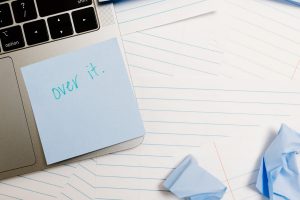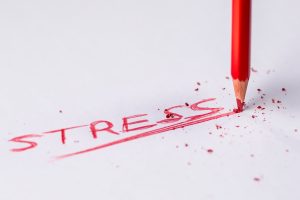Overview of the Aims of a TOK Journal
A Theory of Knowledge journal is an educational tool that can help you develop your analytical and critical thinking skills. This type of journal is used in many different educational settings, such as high schools and universities, to help people to think more deeply about their learning. With a TOK journal, you can explore a range of topics, from personal experiences to current events, in order to gain insight into different ways of understanding the world.
The aim of a TOK journal is to allow students to reflect on their learning and connect it to other areas of knowledge. By reflecting on their experiences and engaging with ideas generated by sources like media, students can see how different fields of knowledge can interact and provide deeper insights into their own understanding.
Through a TOK journal, students can learn to question the connections between various fields of knowledge, to seek out new information and ways of thinking and to critically analyse sources and evidence. Additionally, they can begin to form their own opinions and interpretations on traditional concepts and develop the ability to present their views in an organized and coherent manner.
In addition to the above, a TOK journal also provides students with the opportunity to develop autonomy, initiative and creative problem solving skills. By engaging in this reflective process, students can come to understand how their own values and experiences can inform their practice and learning. Ultimately, the goal of the TOK journal is to provide students with the ability to think critically and deeply about their own learning in order to gain greater insight and understanding.
Getting your TOK Journal up and running is the first step to success. As an approach to learning, writing a TOK Journal involves constructing an ongoing narrative for personal development in understanding knowledge and its value. In this section, we will discuss how to structure your TOK journal for maximum success.
Outline of how to set out a TOK Journal for success
Starting with the basics, your TOK Journal should begin with your name and date. All entries should be dated, so that you can track your progress over time. This will also help you spot any patterns in your thinking and understanding.
It is important to categorize your entries in your TOK Journal according to different topics. This could include categories such as different knowledge areas, or particular periods of time. The aim is to make it easier to locate specific entries later on.
For each entry, provide some general orientation to what you will be discussing. This will serve as an introduction or heading. It should include a brief overview of the content and any relevant background information.
You should also include a conclusion at the end of each entry. When writing this part of your TOK Journal, reflect on what you have gained from the topic and consider the implications for knowledge and understanding.
Finally, review your experience by asking questions. What did you learn? How can you apply what you have learned to other experiences? Reflecting on these questions will help you develop your thinking and foster deeper understanding.
By following the steps outlined above, you will be able to structure your TOK Journal effectively, helping to enhance your thinking. This will ensure that you get the best out of your TOK Journal experience.
Why Reflective Writing is a Key Element of the TOK Journal
Reflective writing is an essential part of a Theory of Knowledge journal and is essential for success. Reflection helps provide a deeper understanding of the impact that one’s experiences are having on his or her learning process. Through reflective writing, learners can learn to identify important information, while also understanding how they can apply this insight to other situations.
Reflective writing also helps to improve critical thinking skills by encouraging an individual to consider the implications of a situation before making a decision. Asking questions like “What could I have done differently?” and “What was the outcome of my actions?” will help the learner to begin to think more critically about the experiences that he or she has had.
With reflective writing, as well as the other elements of a TOK journal, learners can begin to develop a better sense of their knowledge and how to use it to create a deeper understanding of their own ideas. Consequently, reflective writing is a key element of the TOK journal and should be used whenever possible in order to ensure the greatest learning experience possible.
Steps to Build Effective Reflection Questionnaires for Use in the TOK Journal
One of the most important stages of completing a Theory of Knowledge journal is the reflection process. Reflection involves examining your experiences and thoughts, asking questions, and exploring how these relate to knowledge, understanding and learning. As such, it’s essential to create effective reflection questionnaires that will help you to better understand the content of your TOK Journal.
The first step in building effective reflection questionnaires for use in your TOK Journal is to think about what topics you want to explore. Consider any questions and thoughts that have come up in your reading and research, and make sure to include these in your questionnaires. You may also wish to incorporate open-ended questions that can be used to generate further discussion.
Another important aspect to consider when creating reflection questionnaires is the tentative nature of your answers. When you are answering questions in your journal, you should always try to phrase your thoughts in the form of a hypothesis or an opinion. This will allow you to think more deeply about the topics you are exploring without committing to a definite conclusion.
Finally, make sure to give yourself plenty of time to think, research, and reflect on your answers. Allowing yourself time to reconsider your ideas and change your answers if needed can help ensure that your TOK Journal is as thorough and accurate as possible.
By following these steps, you can ensure that your TOK Journal includes effective reflection questionnaires which will help you to explore and enhance your understanding of knowledge and learning.
Contextualizing Your Experiences to Improve Learning
Using a TOK Journal is an effective way to help you deepen and reflect on your understanding. By thinking critically and carefully examining your experiences, you can gain knowledge that will stay with you even after you’re done with the journal.
One key element of contextualizing your experiences to improve learning is to focus on the “big picture.” It’s easy to become mired in the details of your activities, focusing on one task at a time, rather than looking at how each piece of learning contributes to a greater whole. Reflecting on your experiences and writing down your thoughts in the TOK journal will help you to see the larger context for your learning, which in turn will help you to find meaning and importance in what you are doing.
Another important aspect of contextualizing your experiences is to relate them to your own life experiences, or to the experiences of those around you. This helps to make the topics more meaningful and allows for a deeper understanding of the material. For example, if you are studying a certain economic concept, try to relate it to your own life experiences, such as working part-time, or to experiences from your community or family. You can also include stories or anecdotes from other people that help to illustrate the point.
In addition, when contextualizing your experiences in the TOK journal, it is important to record your thoughts and feelings. This will help you to examine the issue from different perspectives and gain a more complete understanding of the concept. By taking the time to record your reactions and reflections, you will be able to recognize patterns in your thinking and better explain complex issues.
This guide has provided some tips on contextualizing your experiences to improve learning with a TOK Journal. By connecting the topics you are studying to the real world and taking the time to record your thoughts and feelings, you can gain a deeper understanding and get more out of your journaling experience.
Incorporating Active Learning Strategies into a TOK Journal
Active learning strategies are an important element for success when it comes to Theory of Knowledge journals. Active learning is designed to engage students with their learning and develop critical thinking skills in order to understand the information they are presented with. It involves asking questions, doing practical activities and taking on the role of the teacher or facilitator in the learning process.
When incorporating active learning strategies into your TOK journal, there are a few key components to consider:
- Questions: Stimulating and reflective questions can help promote deeper learning and understanding of topics, while also minimising preconceived biases. Encourage yourself to ask questions around why you think something is true, what evidence you have to support that, and how different perspectives might shape your understanding.
- Practicals: Practical activities can help to further develop knowledge and understanding of new concepts. Examples include participating in experiments, conducting research, role-playing scenarios, and creating models. All of these activities help to develop students’ analytical and creative abilities.
- Facilitating: Taking on the role of facilitator is another valuable learning strategy to consider. By facilitating a discussion, students are challenged to think critically about the topic at hand, encouraging them to look at the subject from multiple perspectives. At the same time, facilitating a group discussion also requires effective communication and interpersonal skills.
When used correctly, active learning strategies are an invaluable tool to aid in the development of a TOK journal. They encourage students to challenge their own preconceptions and reflections, while simultaneously engaging with the content in a productive and creative way. Ultimately, this leads to a more insightful and meaningful reflection which can be put to use in the real world.
Examining the Impact of Sources Such as Media on Understanding and Knowledge Generation
In the world of modern technology, media such as television, radio, magazines, and the internet are often used to disseminate information. It is important to understand the influence these sources can have on our understanding and knowledge generation.
When examining the impact of sources such as media on understanding and knowledge generation, it is essential to consider how these sources are viewed and interpreted. Evaluation of these sources should include thinking about how the media portrays topics, how accurate it is, and how it might be biased. It is important to note that media sources may provide different perspectives on the same story.
It is also helpful to consider the source itself, who put together the material, and how it was organized. When delving into media sources, our understandings can become enriched as more pieces of relevant information are included. However, care must be taken to ensure the quality of the sources and to look closely at sources that feature unreliable or dubious facts.
Finally, it is important to assess the impact of media on the generation of new knowledge, from multiple angles. A good way to do this is to consider: how does media stimulate curiosity? How does media inform individuals? Does it promote critical thinking? Does it encourage creative problem solving?
These are all essential questions to consider when examining the impact of sources such as media on understanding and knowledge generation. By taking the time to evaluate media sources, we can expand our knowledge and gain a clearer understanding of the world around us.
Demonstrating autonomy, initiative and initiative in the TOK Journal
Creating a Theory of Knowledge (TOK)journal is an excellent way to enhance one’s thinking. Autonomy, initiative, and creativity are important components of a well-executed TOK journal, and it helps to provide examples and evidence which demonstrate these qualities.
For example, you can use your TOK journal to document times when you have taken initiative on a project. Describe what happened, and don’t be afraid to discuss why you took the initiative. Showing that you can think for yourself and be creative is valuable in any situation.
Furthermore, detailing the results of such initiatives is also important. This evidence shows that you were able to take action, follow through, and contribute to the end product or goal. This type of real-world evidence is invaluable and demonstrates initiative.
Finally, providing examples of your own autonomous decisions is essential for a successful TOK journal. This evidence shows that you are able to make decisions independently and not rely on others. Again, discussing why you made a certain decision further cements your autonomy.
In summary, providing examples and stories in your TOK journal that demonstrate autonomy, initiative, and creativity is an excellent way to show your skills and aptitude. Such evidence can be crucial in any situation, so it is important to ensure that it is present in your TOK journal.
Tracking Progress, Setting Goals, and Detecting Patterns in Learning
Setting goals and tracking your progress are essential elements of a successful Theory of Knowledge journal. It allows you to assess how well you are doing, identify areas of improvement, set new goals and make the necessary adjustments to help you progress.
A good approach is to break down tasks into smaller achievable goals. This will help you gain confidence and stay motivated on the journey. You may also want to set deadlines along with a reward system to help you reach your longterm objectives.
By choosing specific milestones and monitoring your progress, you can more easily detect patterns in your learning. This can be done through self-reflection, where you think about and analyze the quality of your work, identify strengths and weaknesses, and decide what changes need to be made.
You can also use data to interpret trends in your learning. Try to keep track of your performance and take note of when you feel like you are making the most progress and when things are not going as well. Through analysis and reflection, you can identify patterns that, once understood, can help you improve your overall performance.
In conclusion, tracking progress, setting goals, and detecting patterns are an essential part of a successful TOK journal. By establishing achievable goals, you can monitor your progress and use self-reflection and data to help you identify and understand patterns in your learning.
Summarizing the Tools that can Enhance Thinking
Understanding and analyzing our thoughts, experiences and knowledge is a key part of developing our critical thinking skills. Tools such as reflective writing, goal-setting, and using active learning strategies are all powerful tools for engaging with the contents of a Theory of Knowledge Journal.
Reflective writing can be used to help structure and systematize your thoughts so that you can coherently examine your experiences, knowledge and opinions. This can help generate better understanding and insights from the information you include in your TOK journal.
Goal-setting is another great tool to use when writing a TOK journal. Identifying what you want to achieve and tracking your progress towards those targets will help you stay on track and drive positive change. Alongside this, you can also use active learning strategies such as mind mapping and concept mapping to enrich your understanding of a certain topic or idea.
Sources such as media can have a great impact on our understanding and knowledge generation. Incorporating these sources into your TOK journal can help you contextualize your experiences and gain a better perspective of a given situation. Additionally, autonomy and initiative are essential components of a successful TK journal. Showing an ability to take the initiative and come up with new ways of tackling challenges can greatly contribute to your learning journey.
By summarizing the tools that can help enhance thinking related to the content of the TOK Journal, we can become more effective in our critical thinking and gain greater insights from our analysis. With a combination of reflective writing, goal-setting, active-learning strategies, media sources and an attitude of autonomy and initiative, you can ensure that you get the most out of your TK journal.
Conclusion and Summary
This guide has provided you with an invaluable resource to help you navigate the unique and challenging experience that is a Theory of Knowledge Journal. Through its contents, you have gained an understanding of the aims and purpose of the TOK journal and explored a range of strategies to help enhance your thinking and ensure success in achieving these aims.
You now understand the key roles reflective writing and active learning have to play in contributing to a successful TOK journal. You also have the tools and techniques to build effective reflection questionnaires and to track progress, set goals, and detect patterns in learning. Finally, you have explored sources such as media and contextualized your experiences in order to improve learning.
In conclusion, the TOK Journal is an invaluable tool for developing the skills and knowledge of students. By leveraging the strategies described in this guide, you will be able to make the most of your TOK Journal and gain the most out of your learning experience.
We hope that this guide has given you the confidence and resources to make your TOK Journal an enjoyable and educational experience. Good luck with your journaling journey!








